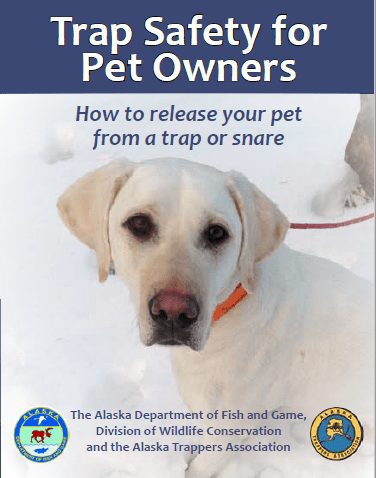As we all settle into autumn, it’s time to start thinking again about the diverse uses of our local trail systems. Enjoying the trails means understanding the rules and what your responsibilities are depending on what kind of user you are.
Trapping seasons in Game Management Unit 6 opens Nov. 10, and all users should be aware of the city ordinance that pertains to trapping within city limits. The area shown on the map in bright red is often called the “old city limits” and is closed to all trapping.
Power Creek Road may be used to access areas for trapping, but traps may not be set within 200 yards of the road. Within 200 yards of the right-of-way of the roads shown in yellow, trapping is restricted to boxed conibears no larger than No. 120 and completely submerged traps of any size and type.
Trapping outside the city limits, or more than 200 yards from the right-of-way outside of the closed area, is not affected by this ordinance. Keep in mind that ethical trapping means being aware of land ownership and avoiding trespass.
CT 11-20 sharing trails-1Many of us Cordovans like to allow our dogs to roam off leash when on a hike. However, by doing so in an area where trapping can occur, you may be exposing your dog to the risk of being trapped.
If you choose to take this risk, I would recommend hiking with a length of rope or a pair of trap-setters. Our website http://www.adfg.alaska.gov/index.cfm?adfg=trapping.sharing has many resources, including a brochure on how to release your dog from a trap and videos demonstrating techniques depending on the kind of trap involved.
A better choice is probably walking within the area set aside in the city ordinance as “closed to trapping.” Remember that tampering with a trap outside of an emergency is against the law.
While most trappers know the Trapping Code of Ethics* and practice it, I’ll include it here. Number 3 particularly pertains to trapping in areas that are frequented by people with dogs.
Trapping Code of Ethics
- Respect the other trapper’s “grounds” — particularly brushed, maintained traplines with a history of use.
- Check traps regularly.
- Promote trapping methods that will reduce the possibility of catching nontarget animals.
- Obtain landowners’ permission before trapping on private property.
- Know and use proper releasing and killing methods.
- Develop set location methods to prevent losses.
- Trap in the most humane way possible.
- Dispose of animal carcasses properly.
- Concentrate trapping in areas where animals are overabundant for the supporting habitat.
- Promptly report the presence of diseased animals to wildlife authorities.
- Assist landowners who are having problems with predators and other furbearers that have become a nuisance.
- Support and help train new trappers in trapping ethics, methods and means, conservation, fur handling, and marketing.
- Obey all trapping regulations, and support strict enforcement by reporting violations.
Support and promote sound furbearer management.
Thanks Cordova for sharing the trails with each other. Now let’s hope for lots of snow to get out and play in.
*The Code of Ethics is reprinted from the Alaska Trappers Manual. The manual was created in a joint effort by the Alaska Trappers Association and the Alaska Department of Fish and Game.
Charlotte Westing in the area wildlife biologist for the Alaska Department of Fish and Game.















